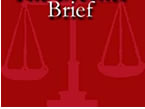« A Putin Of Our Own | Main | Rebirth of the Hoover Republicans »
September 22, 2008
The 700 Billion Dollar End of Reaganism
The 700 billion Wall Street bailout represents the end of Reaganism—the second installment of a two-part historical drama.
Reaganism was, from the outset, a political and cultural reaction to the New Deal. When the banks failed in 1933, at the start of FDR’s first term, and Congress pushed for a depositor insurance plan to rescue troubled institutions, it’s worth noting that the president himself was deeply skeptical. His fear was that insurance would essentially protect irresponsible bankers. Well, perhaps it did—but it did so by directly addressing the needs and interests of individual citizens. It also pulled the rug from under laissez-faire orthodoxy that had rationalized wild and destructive boom-bust swings in the American economy since the Civil War, replacing it with a comfort for sensible economic regulation that lasted until the Reagan years. Then, of course, the mindless mantra became ‘government is not the solution to the problem—it IS the problem.’
Anti-government Reaganism has been a two-headed hydra, with both economic and pop culture strains. Though related, however, each has had something of a life—and perhaps death—of its own. When the Republicans took control of Congress in 1994, they campaigned on an anti-government economic platform, the “Contract With America”. But the political energy behind its success was considerably more emotional, more pop-culturish. Anti-government sentiment was palpable and virulent, expressed in everything from hostility to the postal service to subterranean sympathy for a host of militant crackpot religious sects. Bill Clinton capitalized on that energy (or co-opted it) when he announced in his 1996 State of the Union message that “the era of big government is over.” He won reelection ten months later. But in retrospect, he probably didn’t need to: what was really over was the anti-government pop culture. It had reached it’s zenith the previous year, on April 19th, to be exact: The day Timothy McVeigh pushed anti government ideology into the psychotic stratosphere and blew up the Alfred P. Murrah Federal Building in Oklahoma City. For the first time in a generation the government had human faces—and human babies. Principled skepticism of unbridled government power did not become less philosophically defensible, but visceral and reflexive hatred of government did. Postal service jokes just weren’t quite as funny anymore.
But the other hydra head, the Laissez-Faire economics of Reaganism, has continued to limp along. Years after the Oklahoma bombing, deregulation-lite in the Clinton Administration and the more toxic variety practiced by the Bush crowd has proceeded unchecked by any countervailing economic wisdom with political or cultural muscle. Now, of course, things have come full circle: As Wall Street comes with its tin cup to Congress it does so with the implicit—and sometimes explicit—admission that it needs regulation after all.
I imagine that a bailout of some description is the right thing to do. But I’m also glad—or at least hopeful—that something of Franklin Roosevelt’s skeptical spirit is still alive in his party. As the NY Times reports on the negotiations thus far:
The Senate Democrats’ proposals includes two bold provisions. One would grant the Treasury "contingent shares" of stock in any financial institution that wants to sell bad debt to the government; the other would grant bankruptcy judges the authority to modify the terms of primary mortgages, a step aimed at helping homeowners at risk of foreclosure.The bankruptcy provision is staunchly opposed by the banking, lending and securities industries and by many Republicans in Congress, but Democrats insist that it is one of the few mechanisms to provide direct assistance to homeowners caught in the foreclosure crisis.
The contingent shares would give taxpayers an equity stake in companies seeking help through the rescue program, potentially allowing the government not only to recoup however much of the $700 billion it spends on bad debt, but also to profit should the financial firms prosper in years ahead. The legislation would require the value of the contingent shares to equal the value of the assets purchased by the government.The 44-page Senate proposal, pulled together by Senator Christopher J. Dodd, Democrat of Connecticut and the chairman of the banking committee, would require the Treasury to run the rescue plan through a new "Office of Financial Stability" to be headed by an assistant treasury secretary. It would also establish an "Emergency Oversight Board" to monitor the bailout effort, made up of the Fed Chairman; the chairman of the Federal Deposit Insurance Corporation; the chairman of the Securities and Exchange Commission; and two non-government employees with "financial expertise" in the public and private sectors, one each appointed by the majority and minority leadership in Congress.
Bold indeed. Nothing like it since the New Deal.
Posted by stevemack at September 22, 2008 06:15 PM


